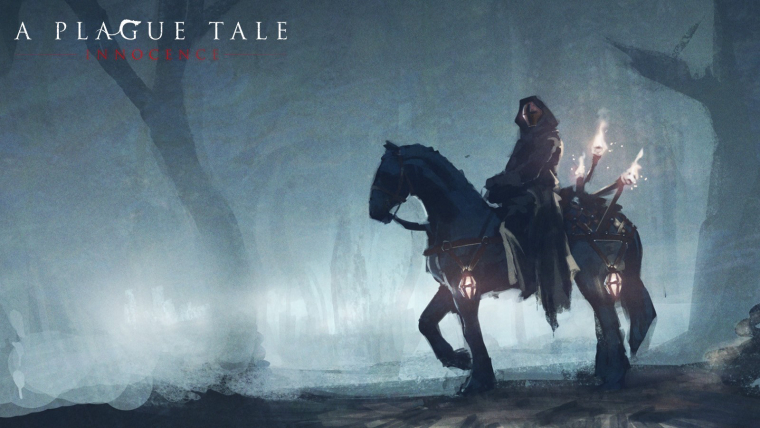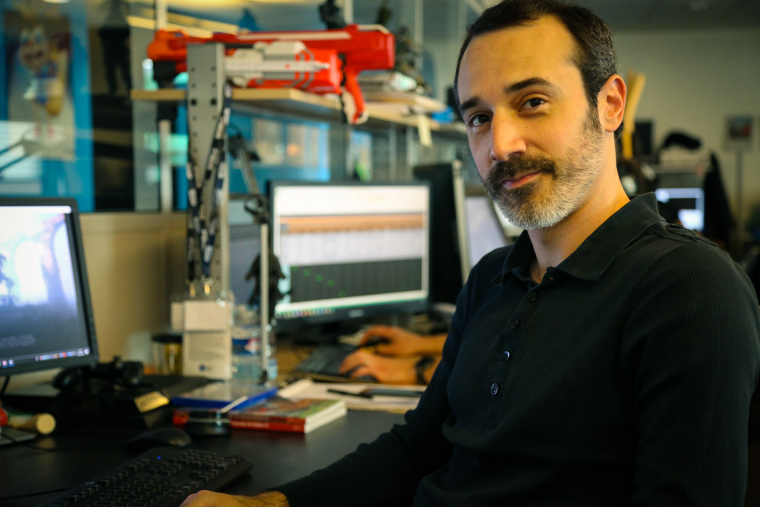
Welcome back to our devblog series where we unveil a wealth of details about the making of A Plague Tale: Innocence, Asobo Studio’s upcoming adventure game coming 2019 to PlayStation 4, Xbox One, and PC. Today, we’re excited to share more info about a “protagonist" that you will have to face in our game: The Inquisition!
Let’s welcome our Narrative Designer Sébastien Renard who will cover the creation of the Inquisition in A Plague Tale: Innocence, as well as the many challenges the team faced during development.
The Inquisition, a Constant Threat
The Inquisition you encounter in the game is a combination of historical research and our own idea of the medieval organization. In A Plague Tale: Innocence, they are trying to stop the rats and ultimately the plague from spreading, so you could say that their goal is rather noble. Their methods, on the other hand, are extremely harsh and cruel. The inquisition wasn’t known for caring for the common people.

A Plague Tale’s version of the Inquisition is a progressive one. Driven by a particular and personal faith, the leader of the Inquisition, Vitalis, sees beyond contemporary dogmas. While his army is combating the spread of the Black Death, he attempts to find an answer through alchemy. Vitalis is convinced that he is working for the common good, and is prepared to commit the most heinous acts in its name.
Creating an Original Inquisition
We wanted to depict our Inquisition as having its own identity (made possible thanks to the art direction). The Inquisition was very powerful at the time, and we show this partly through how they continuously develop new technology to deal with the rats. We also wanted to show the great discrepancies between the Inquisition and the Church. The Inquisition is visionary: it understands the new danger faster than the Church, which is too busy hiding. Vitalis himself is at odds with the Church and wants no ties to it.
You will quickly come to realize that the Inquisition has a veritable army at its disposal. This is a good way to convey their power at a mere glance. It’s also a direct reference to how the Inquisition used to seize goods from nobles who had supposedly run foul of the law. By these practices, they grew as a direct rival to the Church.
 Sébastien Renard
Sébastien Renard
During the Great Plague, the Church was ready to dismantle the Inquisition. However, in A Plague Tale, we chose to portray an Inquisition that is managing to dodge the Church’s attacks. It’s far more powerful under the Great Inquisitor Vitalis, and as a result, it’s also the only force able to fight the plague.
To counter the animalistic danger represented by the rats, we needed a great human threat. We first thought of other figures, such as heretics, but the Inquisition felt like the right choice. What was incredibly useful about the Inquisition was that we could give it a proper visual identity thanks to their armour and banners. These are symbols of the era and reminders of how religion influenced every aspect of society. The Inquisition therefore brings something new to the table: a human opponent with deeply human behaviour. It also helps to shine a light on the constant clash between innocent children and corrupted adults.
The stealth gameplay comes through as a result of The Inquisition forcing Hugo and Amicia to be wary and stay out of sight as they travel. Amicia can fight the Inquisition, but in order to do so, she must develop her skills over time. At the start of our story, our protagonists are cautious, but gradually, they learn to use the rats in their favour. For both Amicia and the players, the main goal is to understand the Inquisition’s new “technology”, and to either choose to stop it or use it to fight back.
The Inspirations for our Inquisition
The Inquisition is a rather grim symbol of the Middle Ages, and best known for the terrible Spanish Inquisition, which was far more violent than the one present in Bordeaux at the time. There, the Inquisition seemed quite reluctant to severely punish people, with the exception of state criminals.

To create the Inquisition, we were particularly influenced by various works in popular culture. Movies such as The Name of the Rose and Black Death, TV-shows like Inquisitio (a french show) and even the manga Berserk (mostly due to its dark aspects).
See you soon for more behind-the-scenes information and anecdotes about the creative process behind A Plague Tale: Innocence!
A Plague Tale: Innocence releases May 14th on PlayStation 4, Xbox One and PC.
http://aplaguetale.com/
